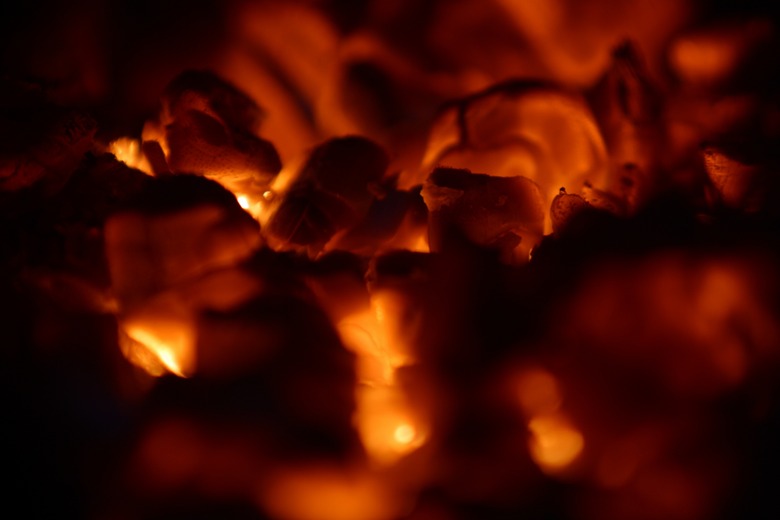What Causes Clinkers In Coal-Fired Boilers?
We may receive a commission on purchases made from links.
Clinkers are a problem when they form in coal-fired boilers. Coal-fired boilers were once commonly used in American homes in the days before electricity. Coal burns hotter and longer than wood, but coal, like wood, can produce leftover chunks called clinkers. To make the boiler run more efficiently, the clinkers must be removed.
Tip
Clinkers form in coal-fired boilers when the fuel source used to power the boiler is inferior. Poor-quality coal contains more water and minerals. These compounds break down when heated to high temperatures, and the debris that results clings to the sides or floor of the boiler, where ash can cover it.
The Problem With Clinkers
The Problem With Clinkers
In 1940, more than half of American households heated their homes with coal-fired heat, according to a March 2019 NPR report. About 130,000 households use coal-fired heat today. One of the problems that results from coal-fired heating is the formation of clinkers. This residue from burning coal needs to be removed in order for a coal-fired boiler to function properly.
If you have a coal-fired boiler, the formation of clinkers is not uncommon. Clinkers can occur if there's a kink in the process, whether you have a small coal stove, a whole-house coal-fired boiler or even an industrial-sized commercial boiler.
Coal that contains more water, along with minerals like calcium, sodium, potassium, pyrite or iron, can break down inside the coal and mix with air, moisture and each other. Debris that resembles lava rocks and volcanic ash results. These clinkers then impede the transfer of heat.
Contributing Factors to Clinkers
Contributing Factors to Clinkers
Clinkers, also known as slag, are the parts of the coal that won't burn. The act of burning coal at high heat causes the minerals to melt instead of burn, resulting in ashes that often contain hard lumps. These lavalike lumps then meld together to form even larger lumps that, if not removed, will make the boiler much less efficient.
One major cause of clinkers is coal that is of poor quality, which usually means it's too soft. Soft coal has more water in it, and it may also have a high concentration of sulfur, iron and minerals associated with clay soils, like calcium and potassium.
The problem may also be the equipment. The boiler has a specific air-to-fuel ratio, and if that's not correct, even high-quality coal can be pulverized before it burns and can cause clinkers. The oxygen intake area could be clogged, the sensor might not be working properly or the instrumental controls might be damaged. You might want to check that the damper is properly closed.
Correcting the Problem
Correcting the Problem
You should remove clinkers when they form after the fire is out. Dump the grate or remove clinkers that form in the furnace grate with a poker.
Once you've diagnosed why you have clinkers, you can set about reducing clinker formation. If the problem is the coal you're using, you may have to find a higher quality source of coal. There are companies that offer products that are formulated to improve coal combustion. This may allow you to continue using your coal source.
You may also want to have a furnace specialist check to make sure your equipment is working properly. An inspection before the heating season begins might reveal problems in your furnace that reduces its ability to efficiently burn coal and contributes to clinker formation.
